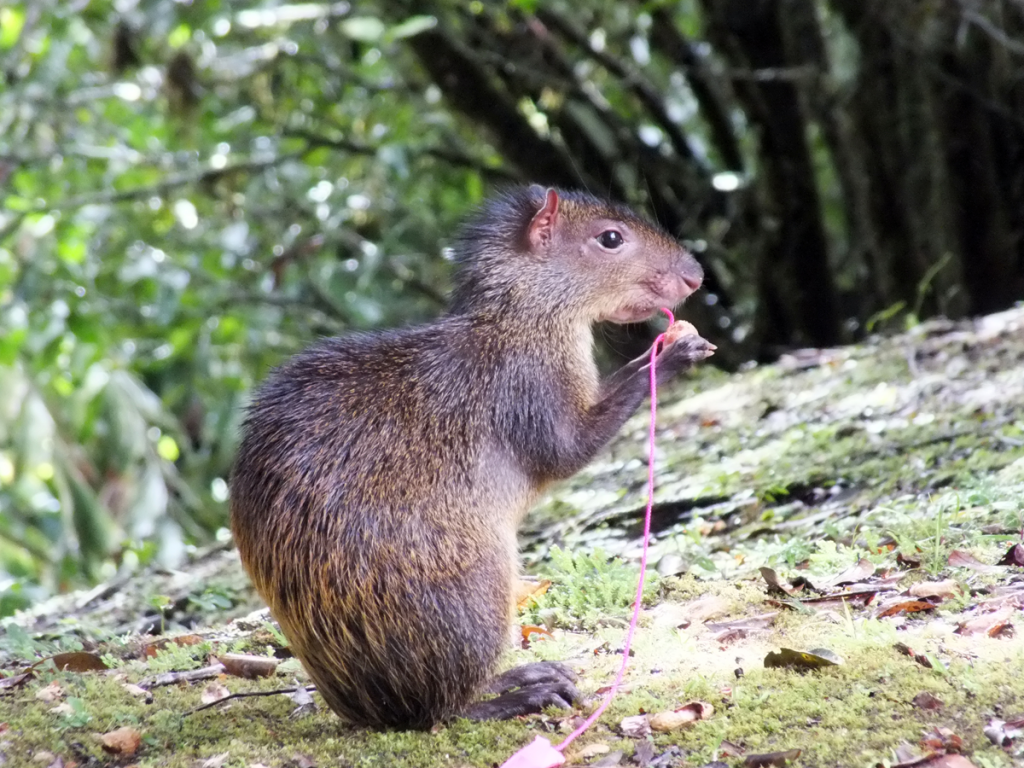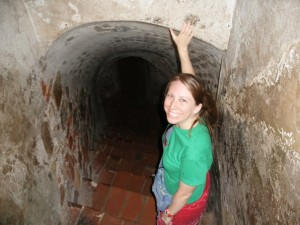The Luis F. Bacardi Award is given to a young post-doctoral researcher (no more than five years after completing Ph.D.) for outstanding conservation-related presentation at each ATBC annual meeting.
The 2014 winner is Dr Erin Kuprewicz from the Department of Botany and Paleobiology, National Museum of Natural History, Smithsonian Institution (erinkuprewicz@gmail.com), for her work on:
Deciphering seed disperser decision-making: how see size and chemical defenses influence seed fate
Human effects on the environment and biodiversity are rapid, global, and long lasting. One region where these effects are most prominent is the tropics. Tropical ecosystems, the most biologically diverse habitats on earth, are experiencing unprecedented, rapid biodiversity loss.

Simplified seed fate diagram for this system involving agoutis, seeds, and seedlings. The hoarding pathway (involving hoarding, dispersal, and predation) was considered in this study. Art by Erin K. Kuprewicz.
One overlooked component of biodiversity loss is the loss of biotic interactions. Most plants in the Neotropics (up to 90%) are dispersed by animals. In fact, many plant species rely upon mammals for reliable and effective seed dispersal. Scatter-hoarding animals can dramatically affect plant survival by depositing seeds in favorable microhabitats away from parent plants (seed dispersal) and by consuming seeds (seed predation). By understanding how scatter hoarders make seed dispersal decisions, we can infer how different plant seed set strategies (producing many small seeds vs. few large seeds) or chemical defenses may influence seed survival and ultimately plant recruitment. Using agoutis (Dasyprocta punctata, Rodentia) as a study model, I experimentally tested how seed size and chemistry influence seed fates in a tropical premontane wet forest in Costa Rica. I hypothesized that seeds perceived by agoutis to be very valuable (i.e., large, non-toxic seeds) would be taken far from sources and preferentially cached over less valuable (small, toxic) seeds. Using artificial seeds created from non-toxic baked plasticine and peanuts, I manipulated fruit size (three weight categories: 4g, 14g, 24g) and chemistry (with or without 2% tannic acid) in fully factorial paired-choice field experiments.

Young agouti (Dasyprocta punctata) dispersing an artificial fruit with string and tag attached for easy tracking in space over time.
I tracked the fates of individually numbered thread-marked seeds in space and time. Overall, large (24g) fruits were moved farthest and preferentially hoarded by agoutis, whereas small (4g) fruits were eaten in situ. There was no difference in the handling, regardless of size, of non-toxic and toxic fruits by agoutis, probably due to the low concentration of tannins used. By experimentally manipulating seed size with a high degree of replication, I have discerned how this fundamental plant functional trait affects agouti seed dispersal decisions, with far-reaching implications for the evolution of seed size in plants, forest community composition, and the conservation of plants and their seed dispersers.




